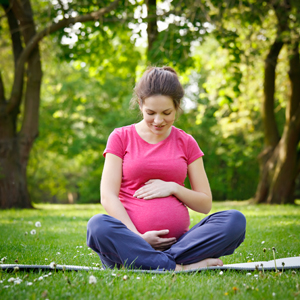Potential Health Complications Mold Exposure Has On Pregnant Women and Infants!
There has been much talk in the news about mold being found in sippy cups, which can have an impact on your child’s health.
The purpose of this article is to explore the issue of mold further by examining it’s health impact on infants and pregnancy, specifically looking at the potential issues that black mold can have.
Is There A Link Between Pulmonary Hemorrhage and Black Mold With Infants?
According to the Centers for Disease Control pulmonary hemorrhage, bleeding in the lungs, is quite common amongst premature infants.
Researchers speculate that toxic effects from the black mold, stachybotrys chartarum, also known as stachybotrys atra, can also contribute to this condition, often accompanied by pulmonary edema, which is the swelling of the lungs.
Researchers believe that the bleeding in the lungs is caused by mold because it produces airborne toxins that weaken tiny blood vessels in infants just as their lungs begin growing at a rapid pace.
Other health problems linked to mold include croup, pneumonia and bronchitis in infants.
Can Asthma Begin In The Womb?
In an earlier article, we explained the link between mold and asthma and it was stated that mold is particularly harmful to children who are exposed to asthma at an early age. Asthma, in short, is linked to the environment and may not be dominated by genetic factors.
Some researchers are now concluding that asthma and other allergies actually begin during pregnancy, in the womb. They believe that asthma may be caused by triggers in the environment, such as black mold because it attacks the respiratory system.
What Is The Link Between Mold and Sudden Infant Death Syndrome (SIDS)?
There is some speculation that SIDS may be caused by the mold, scopulariopsis brevicaulis. The effects of this mold were documented in a New Zealand study that speculated that environmental poisoning may be the cause of SIDS.
The theory and research is based on the fact that mattresses made for infants contain three chemicals. Phosphorous is used in the mattress cover; arsenic and antimony are added as preservatives and fire retardants. The problem occurs when the mattresses get wet.
Researchers theorize that when the mattress gets wet from moisture caused by sweat, spitting on, etc. then the common household fungus, scopulariopsis brevicaulis, begins to grow in the mattress. When this occurs, the mold begins to consume these three chemicals, resulting in the production of three nerve gasses: phosphine, arsine, and stibine, which can be very deadly, especially to infants.
To prevent this from happening, the researchers recommend the following:
- Cover the top, all sides and most of the underside of the mattress with a polyethylene sheeting that is at least 5 mil thick and free of phosphorus, arsenic and antimony. Leave several venting holes on the underside of the mattress cover so that the gas can escape.
- Use fleecy pure cotton mattress cover over the polyethylene sheeting and tuck it in securely.
- Make the bed using pure cotton sheets and blankets.
- Do not use any of the following as baby bedding: sheepskin, moisture-resistant mattress protector, acrylic under blanket, sleeping bag or duvet.
- Clean mattress covers by wiping with pure soap and water. Do not use chemical bleaches or sterilizers.
What Is The Link Between Mold and Miscarriage?
To date, the evidence linking mold with miscarriage or birth defects is primarily anecdotal, ie. there are stories of women being exposed to mold during pregnancy and suffering. According to MBL Laboratories, there is no conclusive evidence that exposure to molds such as Stachybotrys or Aspergillus can cause pregnancy loss. The number one reason that there is no conclusive evidence is that it is very difficult to do clinical trials on a pregnant woman. In short, it would be highly unethical to purposely expose a pregnant woman to high levels of mold spores.
Of the three types of mold–allergenic, pathogenic, and toxic–it is believed that toxic mold, like stachybotrys, could harm the pregnant woman and possibly the baby growing inside. This conclusion is reasonable considering the growing evidence that black mold causes significant health problems.
Despite the lack of research studies on pregnant women, there have been some studies on animals. Animal studies using mice indicate that mold toxins can disrupt fetal development. For instance, oral ingestion of contaminated feed or partially purified toxin of stachybotrys chartarum was shown to cause a decrease in the number of pregnant mice; an increased frequency in dead, resorbed or stunted fetuses; and decreased average litter size. This evidence is not conclusive, but it does show that mold could be harmful.
Mold Exposure Is Not Safe For Pregnant Women and Infants!
Despite the fact that much of the evidence related to the harm that mold can have on pregnant women, the unborn child, and newly born infants is anecdotal, it does not mean that exposure to mold is safe.
Inhaled in large quantities, toxic molds like stachybotrys will cause health problems. The people at greatest risk of health effects associated with mold exposure are those with respiratory conditions, allergies, asthma, and sinusitis, as well as infants and children, elderly people, individuals with a weakened immune system and pregnant women.
If you have just found out that you are pregnant, or begin worrying about mold, you should get your home or workplace tested for mold. Do not as a pregnant woman, attempt to remove the mold yourself, the less exposure you have, the better. Start off your pregnancy in a mold-free environment, it’s better to be safe than sorry. For your baby’s health, it is also important to keep your house mold-free after birth.
If you are unsure if you have mold, hire Mold B Gone to do a mold inspection and air quality tests to measure the spore count inside of the home. If you do have mold, then first fix the source of moisture which is causing the mold, then have it removed.
Questions? Call us, 678-697-6267, or send us an e-mail. We look forward to serving you! 🙂
Is Mold Dangerous To Pregnant Women and Infants Infographic
Does Mold Affect Pregnant Women and Infants? Potential Health Complications Mold Exposure Has On Pregnant Women and Infants! Questions answered about SIDS, asthma, miscarriage, and pulmonary hemorrhage.
Posted by Mold-B-Gone Remediation, LLC on Friday, March 11, 2016
Does #Mold Affect Pregnant Women and Infants? https://t.co/P6Hx3Ro3uS PLEASE RETWEET pic.twitter.com/AHWJtdB5EZ
— Mold B Gone (@moldbgonega) March 11, 2016



